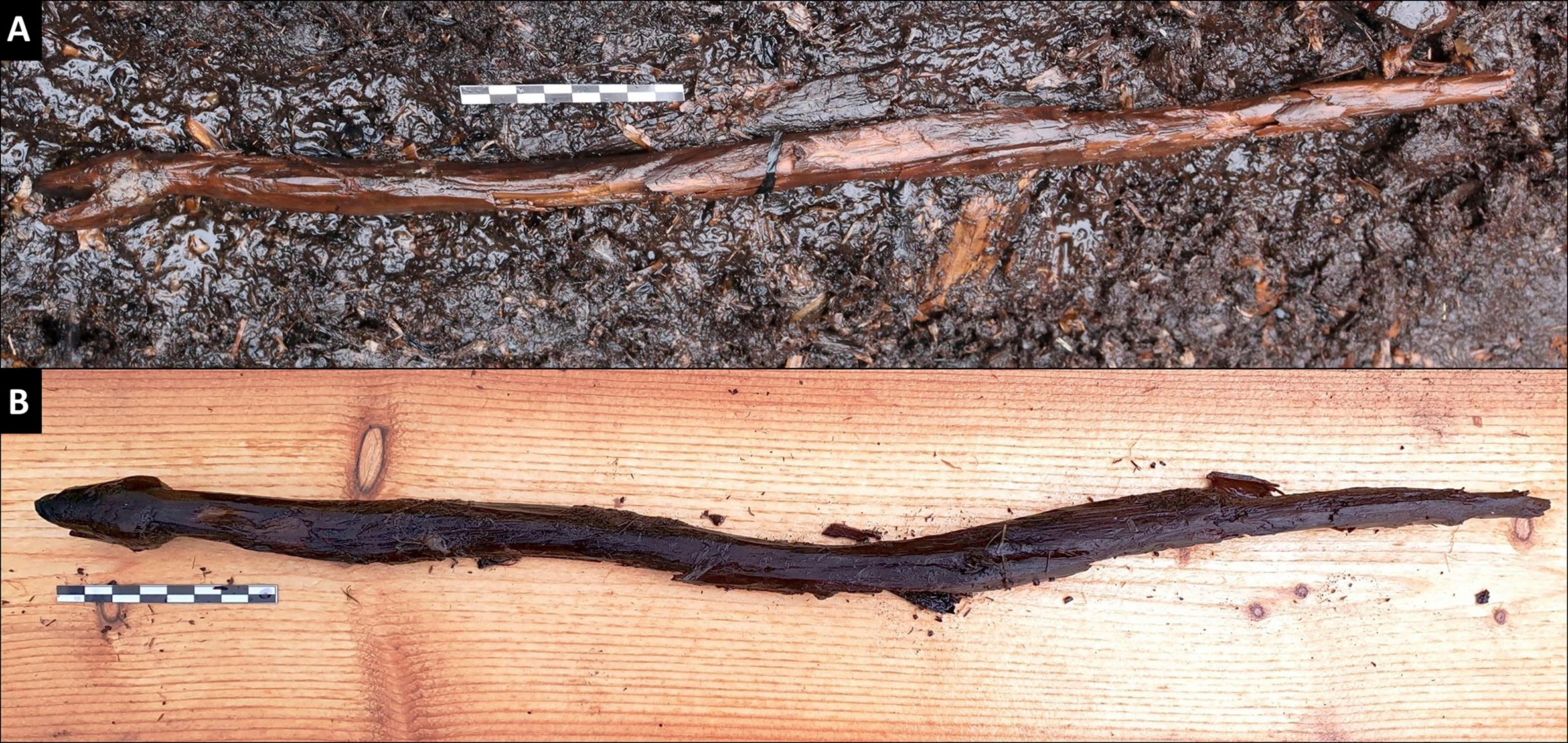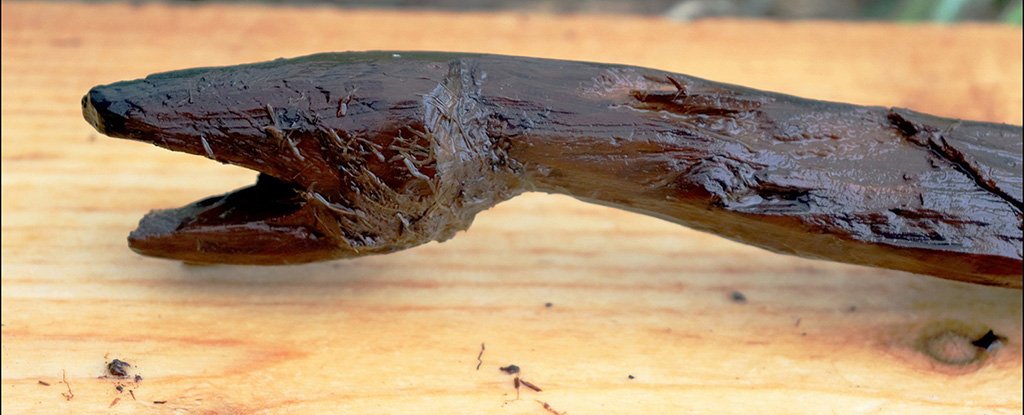Products You May Like
A wooden stick carved into the shape of a snake dating back about 4,400 years has been discovered by a lake in southwest Finland. The stick may have been used for mystical purposes by a shaman.
“I have seen many extraordinary things in my work as a wetland archaeologist, but the discovery of this figurine made me utterly speechless and gave me the shivers,” archaeologist Satu Koivisto said in a statement. Koivisto is a postdoctoral researcher at the University of Turku in Finland who leads research at Järvensuo, the site where the object was found.
The figure, which is 21 inches (53 centimeters) long and about an inch (2.5 cm) thick, was “carved from a single piece of wood,” Koivisto and co-author Antti Lahelma, an archaeologist at the University of Helsinki, wrote in a paper published June 29 in the journal Antiquity.
“The figurine is very naturalistic and resembles a grass snake (Natrix natrix) or a European adder (Vipera berus) in the act of slithering or swimming away,” the researchers wrote.
Related: The 25 most mysterious archaeological finds on Earth
A researcher not involved in the study suggested the artifact may depict a viper. “I would say that a viper is more correct, due to the shape of its head, the short body and distinguishable tail,” Sonja Hukantaival, a postdoctoral researcher in Nordic Folkloristics at Åbo Akademi University in Finland, told Live Science in an email.
“This is interesting, since the viper has an important role in much later (historical) folk religion and magic.”
 The snake figurine where it was found and the excavated artefact photographed from above (S. Koivisto).
The snake figurine where it was found and the excavated artefact photographed from above (S. Koivisto).
The carving could have been used as a decorative figurine, or perhaps it was a staff used by a shaman, the researchers wrote.
“As a preliminary hypothesis, it seems reasonable, however, to place the artifact in the religious sphere,” the researchers wrote. According to historical records that discuss pre-Christian beliefs, “snakes are loaded with symbolic meaning in both Finno-Ugric and Sámi cosmology, and shamans were believed to be able to transform into snakes” they said.
The Sámi live in northern Scandinavia and Russia, while Finno-Ugric languages are spoken in Scandinavia and eastern Europe.
However, the artifact dates back to long before Finnish people began keeping written records, and researchers can’t be certain that people held the same beliefs around 4,400 years ago, Koivisto told Live Science.
The team has also found a large number of fishing artifacts at the Järvensuo site, suggesting ancient fishers frequented the area.
Fascinating find
Experts not affiliated with the research told Live Science that they found the find fascinating.
“This marvelous find shows that people in the Neolithic had a great concern over the subterranean world that we, today, are mostly unaware of,” said Vesa-Pekka Herva, the head of the archaeology department at the University of Oulu in Finland.
A few scholars that Live Science talked to raised the idea that the artifact could be an offering. The fact that it was found in a wetland by a lake “supports the idea that this precious artifact was an offering, and not an accidentally lost item,” said Kristiina Mannermaa, a professor in the department of cultures at the University of Helsinki.
Mannermaa noted that Finland’s acidic soil does not often preserve wooden artifacts for so long. “This is a remarkable sign for Finnish archaeologists that such wetland sites must be investigated before they are destroyed by, for example, drainage and peat extraction [a process in which peat is removed and sold as fertilizer],” said Mannermaa.”
The discovery may be important for the modern day Sámi people said Francis Joy, a postdoctoral researcher at the University of Lapland.
If the artifact “was linked with the ancient ancestors of the Sámi it would bring into focus issues concerning repatriation and also give the Sámi people validation in terms of their prehistory in southern Finland” Joy told Live Science. At times the Sámi have faced discrimination and have campaigned for their rights for many years.
Joy also said that more archaeological work should be done to see if there is an offering place close to where the artifact was found.
Research at the site and analysis of the artifact are ongoing. Researchers are attempting to determine what kind of wood the artifact is made from.
Related content:
Back to the Stone Age: 17 key milestones in Paleolithic life
30 of the world’s most valuable treasures that are still missing
7 bizarre ancient cultures that history forgot
This article was originally published by Live Science. Read the original article here.
